5 Standing Exercises That Reverse Aging Better Than Gym Workouts After 50
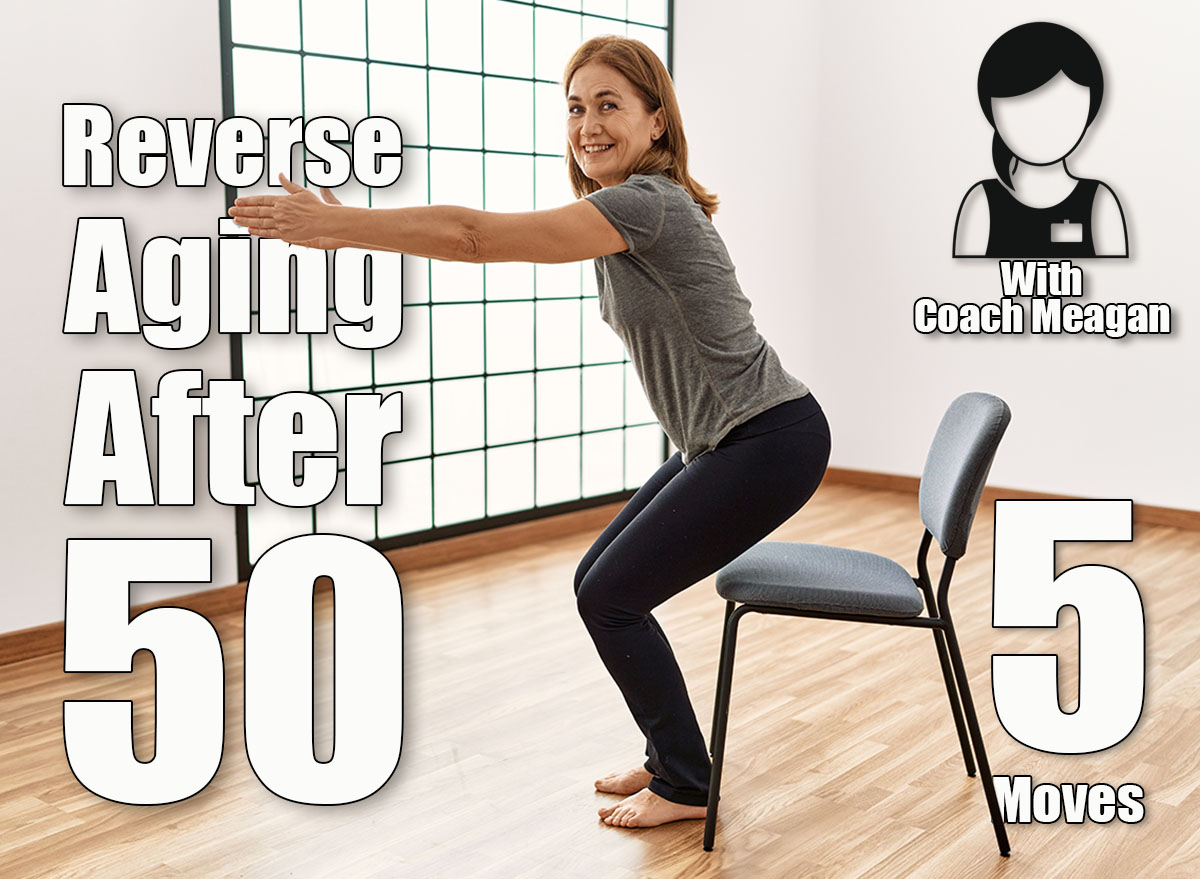
After 50, staying strong and mobile becomes less about looking fit and more about maintaining independence, protecting your joints, and moving better through daily life. As you age, natural muscle loss (sarcopenia) and poor balance often set in, but the right exercise routine can significantly slow that process. Recent research shows that consistent strength and balance training helps older adults maintain mobility and reduce fall risk, two critical factors for healthy aging.
The good news is you don’t need expensive fitness equipment or marathon gym sessions to reap the benefits. Incorporating standing exercises (a.k.a. movements that mimic what you already do daily) can be ultra effective for building strength, stability, and confidence as you age. To learn more, we chatted with two fitness and longevity experts who share their top four standing exercises that can reverse aging better than gym workouts after 50.
“You can build strength after 50 with approachable, standing exercises that feel natural and practical,” says Meagan Kong, CPT, AlterMe’s Head of Fitness. “Strength after 50 starts with what you already do each day. Simple standing moves help maintain mobility, balance, and confidence.”
Nick Fey, CPT, a certified personal trainer at Life Time, tells ETNT that balance and posture work are just as essential as muscle strength for older adults. “Many fall injuries occur due to a lack of coordination and stability in these ranges of motion,” he explains.
Here are four standing exercises recommended by Kong and Fey that target all major muscle groups to help strengthen your balance and build resilience after 50. Read on for detailed step-by-step instructions. Then, when you’re finished, check out these 5 Daily Bodyweight Exercises That Reverse Muscle Loss Faster Than Weights After 45.
5 Standing Exercises That Reverse Aging
Sit-to-Stand Squats
This squat variation will strengthen the muscles you rely on to climb stairs, get out of a car, or rise from a chair, which includes your glutes, quads, and hamstrings. One study found that sit-to-stand ability is strongly linked with longevity and independence in older adults.
How to do it:
- Sit on a sturdy chair with your feet flat on the ground and hip-width apart.
- Without using your hands, press through your heels to stand up.
- Slowly sit back down with control.
- Repeat for 3 sets of 10 to 15 reps.
Modification: Place cushions on the chair to reduce the range of motion until you build strength.
Common mistakes to avoid:
- Using momentum to “fall” into the chair instead of lowering slowly.
- Letting your knees collapse inward.
- Pushing off with your hands.
Standing Calf Raises
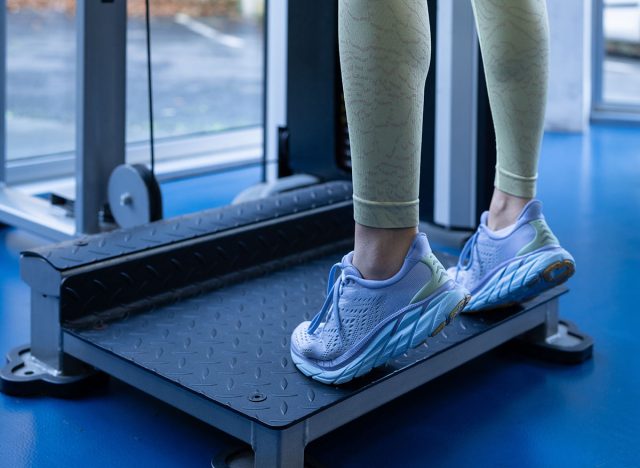
Keeping your calves strong can help boost ankle stability and reduce fall risk. A recent meta-analysis concluded that ankle strength is a key predictor of balance in older adults.
How to do it:
- Stand with your feet hip-width apart near a wall or chair for support.
- Rise onto the balls of your feet as high as possible.
- Hold for one to two seconds, then lower slowly.
- Perform 3 sets of 12 to 15 reps.
Modification: Hold on to a chair or countertop until your balance improves.
Common mistakes to avoid:
- Bouncing up and down instead of using control.
- Rolling ankles outward or inward.
- Letting heels slam down.
Side Leg Lifts
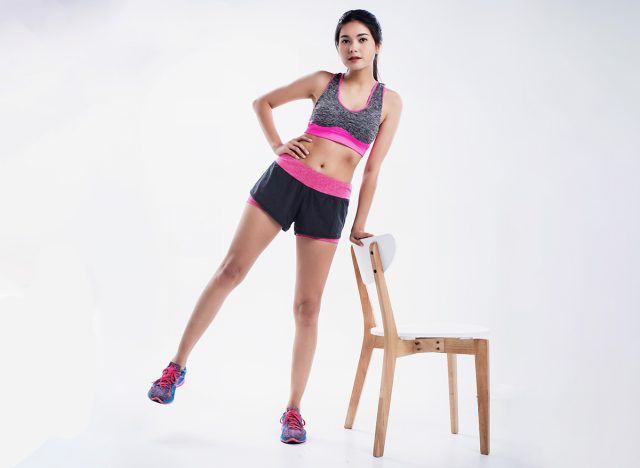
This exercise targets your hip stabilizers, which are small but crucial muscles that keep you steady while walking or stepping sideways. Weak hips are strongly linked to falls and balance issues.
How to do it:
- Stand tall with one hand on a chair for balance.
- Shift weight to your supporting leg.
- Lift your opposite leg out to the side, keeping it straight and your toes pointed forward.
- Pause for one to two seconds, then return with control.
- Perform 3 sets of 10 to 12 reps per side.
Modification: Lift your leg only a few inches off the floor.
Common mistakes to avoid:
- Leaning sideways instead of engaging your core.
- Swinging your leg with momentum.
- Turning your toes upward or downward instead of pointing straight ahead.
Balance Taps
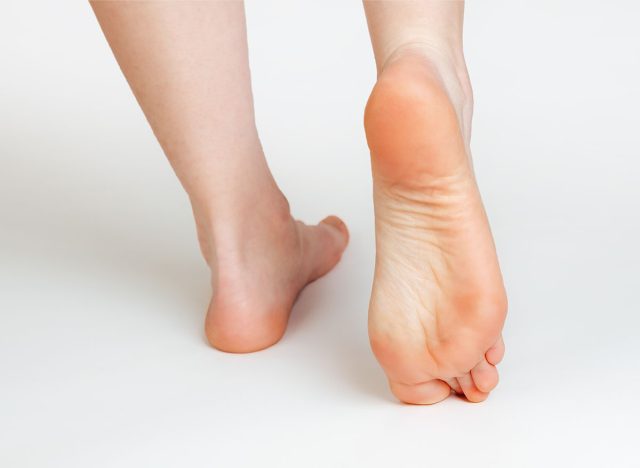
“Balance taps work the hip muscles while also challenging range of motion, balance, and posture,” says Fey. This simple move trains coordination across multiple directions, which can significantly reduce fall risk.
How to do it:
- Stand upright with both feet together. Hold onto a wall or chair if needed.
- Lift one leg and tap your toes forward.
- Bring the same leg out to the side and tap.
- Tap the toes behind you.
- That’s one repetition. Repeat for 8 to 10 reps, then switch legs.
- Perform 3 to 4 sets per side.
Modification: Keep a chair close by and reduce the size of the taps.
Common mistakes to avoid:
- Rushing through the taps instead of holding balance.
- Collapsing posture instead of standing tall.
- Forgetting to engage your core.
Side Step-Ups
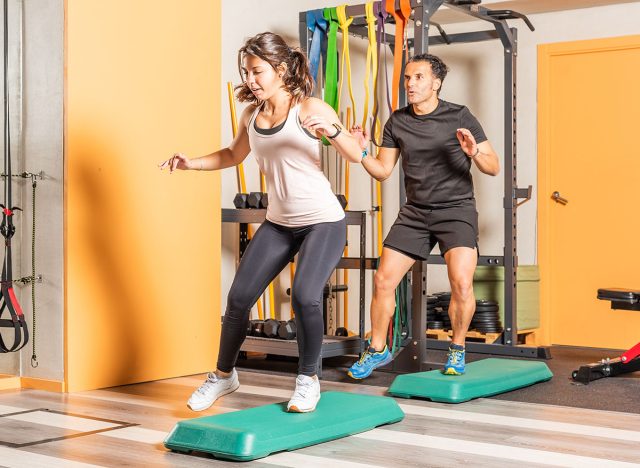
Side step-ups mimic real-world actions like getting in and out of a car or bathtub. “Practicing step-ups helps correct side-to-side imbalances while strengthening large muscle groups such as the glutes, hamstrings, and quads,” explains Fey.
How to do it:
- Stand next to a low step (4 to 6 inches high).
- Place your inside foot on the step.
- Drive through your heel to bring the other foot up.
- Step down slowly with the non-dominant foot.
- Complete 8 to 10 reps per side for 3 to 4 sets.
Modification: Start with a very low step or even a curb.
Common mistakes to avoid:
- Allowing the working knee to move too far past the toes.
- Dropping down too quickly instead of lowering with control.
- Using momentum instead of muscle strength.
Putting It All Together
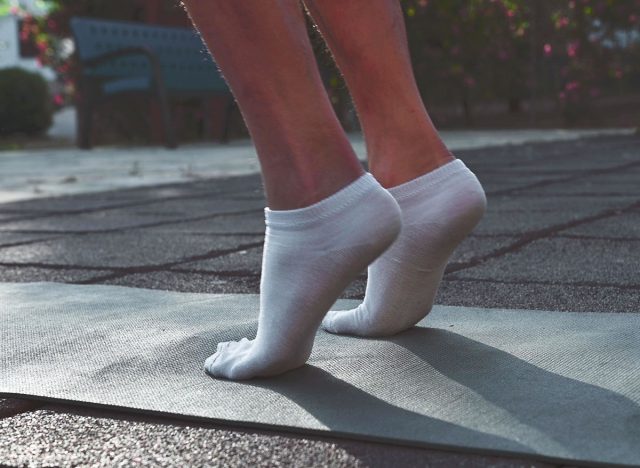
These four standing exercises can be done three to four times a week as a short and effective workout. If you’re game, try this 20-minute routine:
- Sit-to-Stand Squats: 3 sets x 10–15 reps
- Standing Calf Raises: 3 sets x 12–15 reps
- Side Leg Lifts: 3 sets x 10–12 per side reps
- Balance Taps: 3 sets x 8–10 per side reps
- Side Step-Ups: 3 sets x 8–10 per side reps
Rest for 30 to 60 seconds between exercises. If you’re short on time, perform one set of each as a circuit, rest, and repeat for two to three rounds.